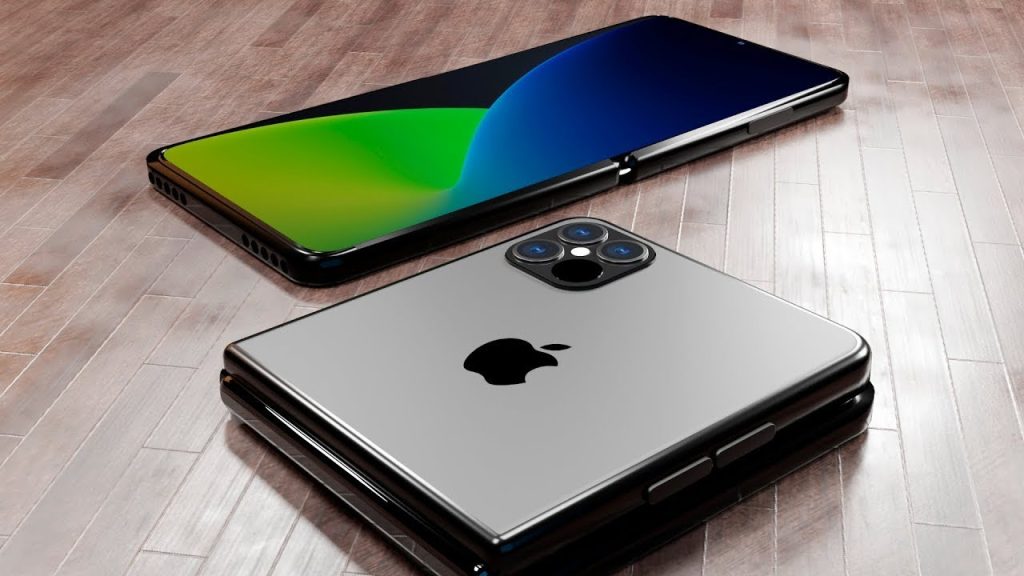The buzz around Apple’s entry into the foldable smartphone market has reached fever pitch, with industry insiders and tech enthusiasts eagerly awaiting the tech giant’s move into this futuristic space. Reports now suggest that Apple’s first-ever foldable iPhone could debut in 2026, featuring a design inspired by the Samsung Galaxy Z Fold rather than the compact Galaxy Z Flip. This bold choice reflects Apple’s strategy to redefine user experience in the foldable segment.

The Foldable iPhone: What We Know So Far
Apple’s journey toward a foldable smartphone has been a long time coming. While Samsung has already established dominance with its Galaxy Z Fold and Z Flip lines, Apple has been conspicuously absent from this growing segment—until now.
According to Ross Young, a respected display industry analyst, Apple’s foldable iPhone will likely feature a book-style fold design, much like the Galaxy Z Fold series. Young revealed this information during an exchange on the social platform X, where he confidently stated “Fold” in response to speculation about Apple’s potential design choice.
Why Apple Chose a Foldable Design Similar to the Galaxy Z Fold
Apple’s decision to opt for a foldable design reminiscent of the Galaxy Z Fold rather than the Galaxy Z Flip offers insight into the company’s strategic vision. While the Z Flip targets users looking for a compact, stylish device, the Z Fold provides a more expansive screen ideal for multitasking, gaming, and immersive experiences.
By aligning with a foldable design that emphasizes productivity and functionality, Apple seems to be catering to professionals, creatives, and tech-savvy users who value versatility. This move could set the stage for Apple to carve out a niche in the foldable smartphone market by offering a unique blend of hardware excellence and software optimization.
Potential Features of Apple’s Foldable iPhone
Though specific details about the foldable iPhone remain under wraps, Apple’s history of innovation provides clues about what to expect. Here’s what could be in store:
1. Advanced Display Technology
Apple is likely to integrate its cutting-edge ProMotion technology, offering smooth scrolling with refresh rates up to 120Hz. The foldable screen will likely feature OLED or Micro-LED technology for superior color accuracy and brightness.
2. Enhanced Multitasking Capabilities
A foldable design enables seamless multitasking. Apple’s iOS ecosystem could be optimized to support split-screen modes and app continuity, enhancing the user experience across folded and unfolded states.
3. Durability and Build Quality
Apple is known for premium build quality, and its foldable iPhone is expected to feature reinforced hinges and scratch-resistant materials to ensure longevity.
4. Compatibility with Apple’s Ecosystem
Integration with Apple’s ecosystem—such as seamless connectivity with AirPods, Apple Watch, and iPads—will likely be a key selling point, offering users a unified experience.
Challenges Apple Faces in the Foldable Market
Despite its reputation for delivering polished products, Apple faces several hurdles as it enters the foldable market:
1. Established Competition
Samsung, Google, and other Android manufacturers have a head start, with multiple generations of foldable devices already in the market. Apple must deliver a product that significantly outperforms its rivals to stand out.
2. High Production Costs
Foldable screens and hinges are expensive to manufacture. Apple will need to strike a balance between premium pricing and value to attract a broad customer base.
3. Software Optimization
Ensuring a flawless experience in both folded and unfolded modes will require significant investment in software development, especially given iOS’s current lack of foldable-optimized features.
How Apple’s Entry Could Change the Foldable Market
Apple’s entry into the foldable smartphone market is poised to shake up the industry. Here’s how:
1. Setting New Standards for Foldables
Apple has a track record of redefining markets it enters, as seen with the iPhone, iPad, and Apple Watch. The foldable iPhone could set new benchmarks in terms of design, performance, and usability.
2. Increased Consumer Interest
Apple’s involvement is likely to boost mainstream interest in foldable smartphones, encouraging more competitors to innovate and refine their offerings.
3. Expanded App Ecosystem
Apple’s influence could prompt app developers to create more foldable-optimized applications, enhancing the usability of foldable devices across platforms.
What to Expect from the Foldable iPhone Launch in 2026
The anticipated launch of Apple’s foldable iPhone in 2026 is expected to generate significant excitement, with fans and critics alike eager to see how the device stacks up against its Android competitors. Industry experts predict that Apple will reveal its foldable iPhone alongside its traditional iPhone lineup, giving consumers a choice between classic and foldable designs.
5 FAQs About Apple’s Foldable iPhone
1. When will Apple launch its foldable iPhone?
Apple is rumored to launch its first-ever foldable iPhone in 2026.
2. What design will the foldable iPhone feature?
Reports suggest Apple will adopt a book-style design similar to the Samsung Galaxy Z Fold.
3. How will Apple’s foldable iPhone differ from Android competitors?
Apple’s foldable iPhone is expected to feature seamless integration with iOS and the Apple ecosystem, offering a unique experience tailored for multitasking and productivity.
4. Will the foldable iPhone be durable?
Given Apple’s focus on quality, the foldable iPhone is likely to feature robust materials and advanced hinge technology for enhanced durability.
5. How much will the foldable iPhone cost?
While no official pricing is available, it’s expected to be positioned as a premium device, potentially starting at $2,000 or more.




